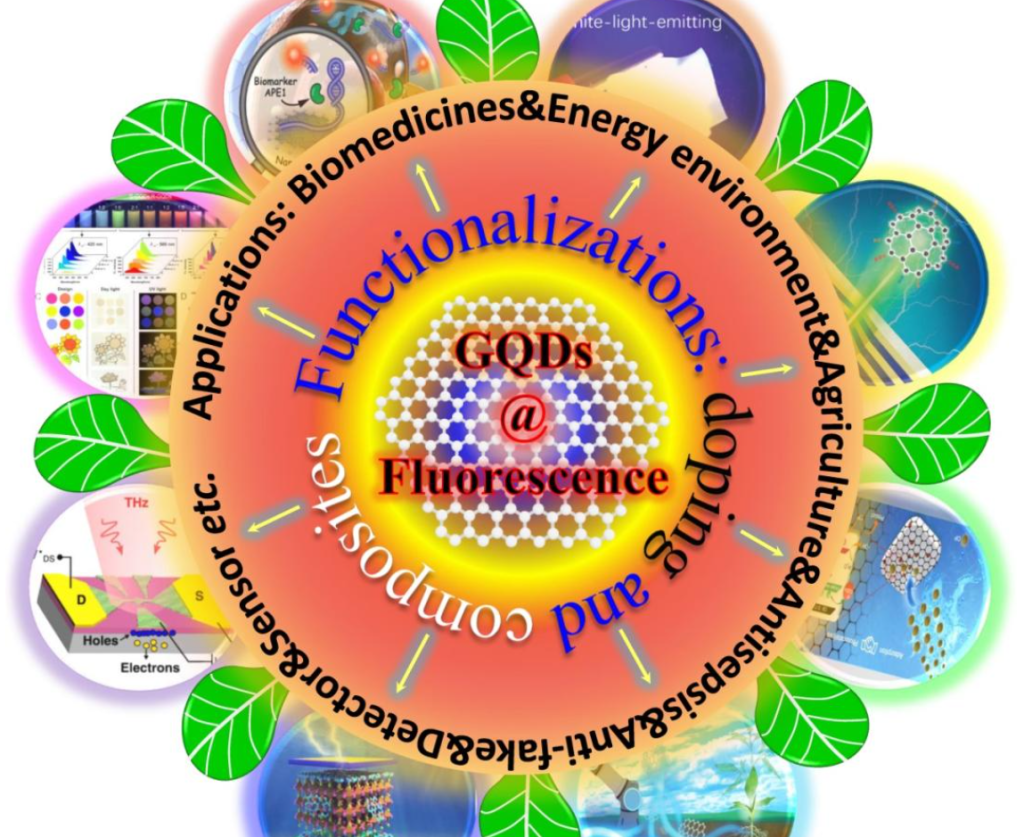Polymer Functionalized Graphene: Advancing Composite Materials and Beyond
Graphene’s exceptional properties—high electrical conductivity, mechanical strength, and thermal stability—have made it a sought-after material for a wide range of applications. However, its hydrophobic nature and tendency to agglomerate in many media present challenges for practical use. By functionalizing graphene with polymers, these limitations can be addressed, creating hybrid materials that combine the strengths of both components.

In this article, we delve into the synthesis, advantages, and applications of polymer-functionalized graphene, highlighting its transformative impact across industries.
1. What is Polymer Functionalized Graphene?
Polymer functionalized graphene involves modifying graphene or its derivatives (e.g., graphene oxide) with polymers. This process improves graphene’s dispersion in solvents and matrices, enhances its processability, and imparts specific physicochemical properties tailored to target applications.
By integrating graphene with polymers, hybrid materials are created that exhibit:
- Improved dispersibility in various solvents and polymer matrices.
- Tailored surface properties for specific functionalities.
- Enhanced mechanical, electrical, and thermal properties compared to traditional materials.
2. Methods of Polymer Functionalization
The functionalization of graphene with polymers can be achieved through several methods, depending on the desired properties and application.
2.1 Covalent Functionalization
Covalent functionalization involves forming chemical bonds between the polymer and graphene.
- Mechanism: Reactive sites on graphene (e.g., carboxyl, hydroxyl, or epoxy groups on graphene oxide) react with functional groups on the polymer.
- Examples:
- Grafting polymers onto graphene oxide via esterification or amidation.
- Polymerizing monomers directly on the graphene surface.
Advantages:
- Creates strong, stable bonds.
- Provides durable functionality for demanding applications.
2.2 Non-Covalent Functionalization
Non-covalent methods involve weak interactions such as van der Waals forces, π-π stacking, or hydrogen bonding between graphene and polymers.
- Mechanism: Polymers physically adsorb onto the graphene surface without altering its structure.
- Examples:
- Wrapping graphene sheets with surfactant polymers.
- Dispersing graphene in block copolymer solutions.
Advantages:
- Preserves graphene’s intrinsic properties, such as conductivity.
- Simpler and less expensive than covalent methods.
2.3 Polymer Blending
Polymer blending incorporates graphene into polymer matrices to form composites.
- Mechanism: Graphene is dispersed in a polymer melt or solution, creating a composite through physical mixing.
- Examples:
- Mixing graphene with thermoplastics like polyethylene or polystyrene.
- Incorporating graphene into epoxy resins.
Advantages:
- Scalable and compatible with industrial manufacturing processes.
- Provides tunable properties through composite formulation.
3. Advantages of Polymer Functionalized Graphene
3.1 Enhanced Dispersion
Polymer functionalization reduces graphene’s agglomeration, enabling uniform dispersion in solvents and composites.
3.2 Tailored Properties
Functionalization imparts specific characteristics, such as hydrophilicity, biocompatibility, or conductivity, to graphene.
3.3 Mechanical Strength
Graphene’s mechanical properties, combined with the flexibility of polymers, result in composites with superior tensile strength and elasticity.
3.4 Thermal and Electrical Conductivity
Polymer-functionalized graphene composites exhibit enhanced conductivity, making them suitable for electronics and thermal management.
3.5 Scalability
These materials are compatible with existing industrial processes, enabling cost-effective production.
4. Applications of Polymer Functionalized Graphene
4.1 Composite Materials
Polymer-functionalized graphene is extensively used in composite materials to enhance mechanical, electrical, and thermal properties.
- Automotive and Aerospace: Lightweight, strong composites for vehicle and aircraft components.
- Construction: Reinforced concrete and polymers for increased durability and resistance.
4.2 Coatings and Films
Graphene-polymer hybrids are used in coatings for improved durability, corrosion resistance, and conductivity.
- Protective Coatings: Anti-corrosion coatings for metals in harsh environments.
- Conductive Films: Transparent, flexible films for touchscreens, sensors, and electronic devices.
4.3 Energy Storage Devices
Functionalized graphene is a game-changer in batteries and supercapacitors.
- Lithium-Ion Batteries: Polymer-graphene hybrids improve electrode stability, capacity, and charge-discharge rates.
- Supercapacitors: Enhanced energy density and cycle life for advanced energy storage systems.
4.4 Biomedical Applications
Polymer-functionalized graphene’s biocompatibility and functional versatility enable its use in medicine.
- Drug Delivery: Functionalized graphene serves as a carrier for targeted drug delivery, improving efficacy and reducing side effects.
- Biosensors: Graphene-polymer hybrids detect biomolecules with high sensitivity for diagnostics.
4.5 Water Treatment
Graphene-based composites improve pollutant removal and filtration.
- Membranes: Functionalized graphene enhances the efficiency of polymer membranes for water desalination and filtration.
- Adsorption: Composites adsorb heavy metals and organic contaminants from wastewater.
4.6 Electronics
Graphene-polymer composites enable next-generation electronic devices.
- Flexible Electronics: Stretchable and conductive composites for wearable devices.
- Printed Circuit Boards: Lightweight, high-performance materials for advanced electronics.
5. Real-World Case Studies
5.1 Graphene-Reinforced Polymers for 3D Printing
A leading 3D printing company incorporated polymer-functionalized graphene into its filament materials. The resulting composites exhibited improved strength and thermal stability, enabling the production of lightweight, high-performance parts for aerospace applications.
5.2 Conductive Coatings for Smart Devices
A manufacturer of touchscreens utilized graphene-polymer hybrids in its conductive coatings, achieving improved durability and responsiveness compared to traditional ITO coatings.
5.3 Water Filtration Membranes
A water treatment company developed graphene-enhanced polymer membranes that significantly reduced energy consumption in desalination plants while maintaining high filtration efficiency.
6. Challenges and Future Directions
Challenges:
- Cost: Polymer-functionalized graphene remains more expensive than traditional materials.
- Scalability: Large-scale production methods require further optimization.
- Compatibility: Ensuring uniform dispersion in different polymer matrices is challenging.
Future Directions:
- Green Functionalization: Developing eco-friendly methods for polymer functionalization to reduce environmental impact.
- Advanced Applications: Expanding applications in quantum computing, artificial intelligence, and biomedicine.
- Scalable Manufacturing: Advancements in roll-to-roll processes and automation to enable mass production.
7. Conclusion
Polymer-functionalized graphene represents a paradigm shift in material science, bridging the gap between nanomaterials and real-world applications. Its ability to improve dispersion, tailor properties, and enhance performance makes it a cornerstone for industries ranging from aerospace to medicine.
As research progresses, the scalability and affordability of these materials will continue to improve, unlocking their potential in emerging technologies and driving innovation across the globe.
By harnessing the unique properties of polymer-functionalized graphene, industries can achieve breakthroughs in sustainability, efficiency, and performance, shaping a future defined by advanced materials.

